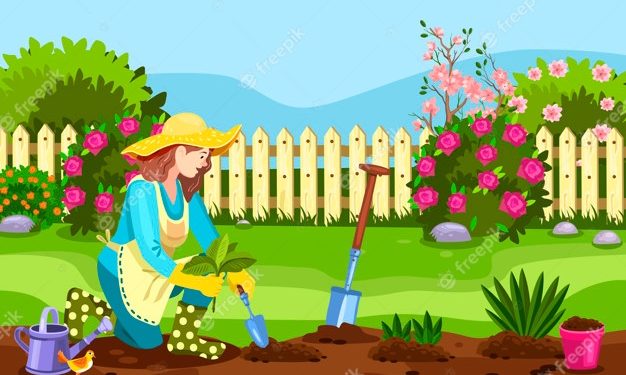Spring is the most exciting part of the year for gardeners as this is the season when everything in the garden is blooming with color, freshness, and beauty. But before the spring season start, there are lots of preparation that a gardener should do during late winter and early spring to make sure that their garden will bloom when springtime begins. Spring gardening is filled with nurturing, sowing, and growing your plants, so the end colder month is the best time to organize your garden.
Here are useful ideas on how to jumpstart your spring plants and make the most out of this time.
1. Tidy your Garden
One of the first things that a gardener must do is tidy the garden by removing all dead leaves and weeds. Spring gardening requires a neat and clean place to grow, so make sure that you prepare the spot and free it from different kinds of clutter.
2. Put Additional Nutrients into the Soil
Another important consideration is to add some nutrients to the soil after the winter season. The soil is ready to dig up and re-energize during this time. Use a tiller or spade to loosen up the compact soil and dig up to 14 inches below.
Remove old composted leaves and other decayed garden debris, and add fresh compost on top of the soil. After putting the compost on top, rake it evenly and water lightly to keep the soil moist. You may also consider a soil test to know the pH and the nutrient level of the soil.
3. Make a list of Flowering Plants
By the end of the winter or early spring, it is good to know what you want to plant in your garden. You need to list down spring gardening plants that you want to include in your garden this year. You can start planting during early spring once your garden is settled.

4. Clean the Greenhouse and other Equipment
Greenhouse owners need to clean it thoroughly even before springtime comes. It is also the same with garden equipment to ensure that everything is free from pests and other harmful microorganisms harming plants. One may also use disinfectant for cleaning glasses, garden equipment, and tools. Also, ensure that your greenhouse is well ventilated a few days before you start planting.
For gardeners who own an urban cultivator, it is necessary to do scheduled maintenance and cleaning not only during early spring.
5. Hunt and Eliminate Pests
Winter is a good time for pests to hibernate inside your garden, so you need to hunt them and make sure to eliminate all pests such as snails, slugs, and aphids. These pests can cause harm to your spring gardening plants. Take a closer look at a particular bug known as white vine weevil larvae because this pest can live beneath the compost and eat all plant roots.
6. Start Sowing Seeds
Even before the springtime starts, you can begin sowing seeds, especially those that take time to grow. These plants that require early sowing are geraniums, aubergines, peppers, and more. You need to study spring plants and know more about seeds before choosing them in your garden.
7. Start to Collect Water
One can consider the installation of a water butt to collect water from rainfall. Most rain happens during the winter season, so it is better to decide as early as possible to collect enough water during colder months. Harvesting water from the rain promotes sustainable spring gardening, which is good for the environment. Also, water from the rain is good for plants, especially for blueberries, camellias, and others, as tap water is often a bit alkaline.
8. Consider Transferring Deciduous Shrubs
The Wintertime is the best season to transfer your shrubs since they are dormant during colder months. Do it during a fine day to avoid drying out the roots. As you uproot the shrub, make sure to take out as much of the root ball so it is easier for the plant to re-establish in its new location.
9. Check your Fences
Cold winter months will surely create damages to your fences, gates, and trellis. You should look for signs of damages and decays and treat or replace parts with damages. Removing all moss and mildew is vital, and applying a new coating like paint or wood preservative to protect your spring-flowering plants.
10. Consider a Composting Area
Early spring is the time for you to start doing compost pit by simply purchasing an affordable compost bin. Compost is also one way to promote sustainable gardening using organic waste. What you can include in your compost is kitchen waste such as vegetable and fruit peelings, wood cutting free from any chemicals, and grass or leaves clippings.











